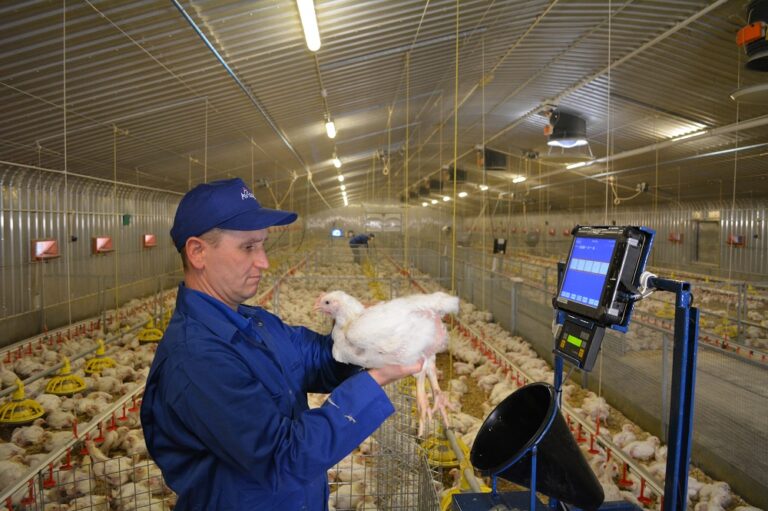Brendan Duggan, an Aviagen geneticist, examines the story behind the popularity of the Ross 308 broiler
As climate change accelerates, the need for feed-efficient chicken increases. In the next few decades, much of the developing world is expected to rise above the poverty level, leading to a rise in meat consumption. It is vital that affordable and efficient chicken is available to both developing and existing markets, as chicken is by far the most environmentally sustainable source of meat.
In the past 15 years, the Ross 308 has improved its Feed Conversion Ratio (FCR) by two percentage points per year, resulting in 37% less agricultural land required for the production of broiler feed over this period. In a time of high demand on the planet’s resources, land use savings such as these are critical to keeping meat production as sustainable as possible. To maintain and improve this progress in efficiency, we invest in incorporating ground-breaking technology into our selection process, while also expanding the size and breadth of the breeding programme.
Breeding innovation
A strong investment in our UK breeding programme means we can promote health and welfare as part of a balanced breeding approach. Therefore, rather than emphasising only a small number of production characteristics, such as FCR and yield, we have a wide breeding goal to simultaneously improve performance, health and welfare, covering more than 40 traits. We believe that high welfare and health outcomes are central to ensuring broiler production is economically profitable, and the innovation and development within our breeding programme reflect this philosophy.
For example, since the early 1990s, Aviagen has bred birds that are completely free of even minor leg defects. This approach has steadily removed genes associated with leg defects from our populations, which is why the Ross 308 holds its reputation as a high-welfare conventional bird today.
Leveraging medical science
In a quest for constant improvement, we’re continually introducing new innovations and measurement techniques to enhance the health and welfare of our birds. To do so, we’ve applied various developments in the medical field to the broiler breeding programme. For example, CT imaging not only makes it possible to measure breast yield accurately on live birds, but it also allows us to select for better skeletal health.
These new techniques complement already existing technologies also used in the medical field, such as oximetry. Oximeters measure the oxygen saturation levels of the blood, so we can select for bird populations with a higher oxygen-carrying capacity. After using oximetry in our breeding programme for over 25 years, ascites is no longer a major concern in broiler chickens.
Innovating for robust, healthy birds
We select our birds in various environments and with differing feed quality to ensure the Ross 308 will perform well in a variety of management conditions. We also measure the water intake and gut health of individual birds to develop more robust gastro-intestinal health. We have developed selection methods which improve the natural ability of the eggs to protect against harmful bacteria. These techniques are central to breeding birds that will thrive in an antibiotic-free future.
While technology is central to measuring many traits, some traits are evaluated using more basic means. Aviagen has developed an eight-point gait score to assess the walking ability of each bird. Thus, as we continue to respond to market demands for greater breast yield, gait scoring helps ensure that the skeletal architecture of the body keeps up with this growth and that the bird will support itself easily. At Aviagen, we only breed those birds that display excellent gait, ensuring that those genes associated with good skeletal architecture are widespread within our populations.
Balanced breeding – key to health, welfare and efficiency
Trial results (both independent and internal) confirm that this balanced breeding approach is working. Publically available data demonstrates a marked difference in the various conventional breeds, with the Ross 308 displaying much better welfare outcomes than other conventional lines.
Of course, we put just as much effort into improving the feed efficiency, health and welfare of our slow-growing and coloured breeds, as we do for our conventional breeds. By advancing all our lines through a balanced breeding approach, we are creating an opportunity to produce meat in a more environmentally sustainable way than ever before, while maintaining the best possible welfare for our birds.


